Three Ghostly Roses is part supernatural horror, part martial arts adventure, and part touching family drama and, for the most part, it all blends together remarkable well.
Edmund Brigham is our protagonist and, like many RPG protagonists, he’s come down with a bad case of plot amnesia. Unlike many protagonists, he’s also very dead and trapped in the Limbo-like land of the Under, a place filled with terrible traps capable of breaking body and mind alike, where souls eternally wander when they are unable to peacefully pass on. With only the amused guidance of the Gatekeeper, his martial arts skills, and the image of a rose burning in his mind, Edmund Brigham sets off on a journey of regrets and redemption.
This is a short game, short enough that you can, and probably should, finish it in one sitting. So, I’m going to be especially vague regarding story details. The main point of note here is Edmund died shortly before he could make amends with his three daughters, whom he was not on the best of terms with. As horrible and cruel as the Under is made out to be, it does contain something with which Edmund may, in some small way, aid his daughters from beyond the grave and redeem himself. The plot is straightforward overall and, while it’s not devoid of a few twists, the main appeal here is gradually learning more about Edmund Brigham and his family. That’s as much as I want to reveal concerning the story, but it’s well-written and worth discovering for yourself.
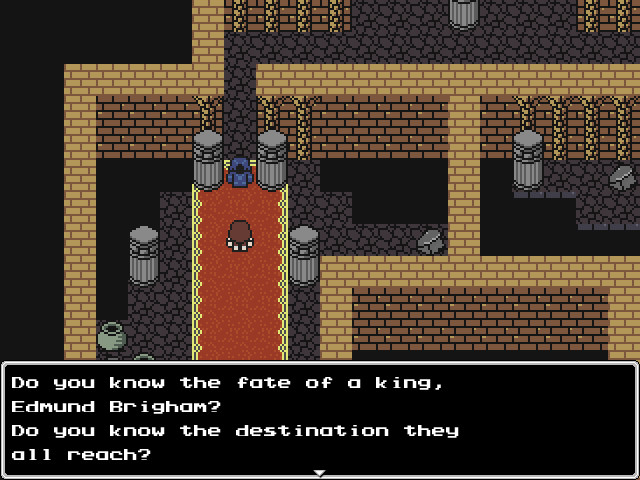
Its tone might very well be the best part of Three Ghostly Roses. This game has a strange yet smooth blend of genres and the strengths of this unique mixture are most apparent in its tone. There is a deliberate pace and a sense of weight behind nearly every sentence which creates a sense of epic grandness like that of Epikos.
Even though the scope of the story is a strictly personal one for Edmund Brigham, he’s not simply on a small adventure, but on a Quest of Utmost Importance. This is a story where fully addressing its protagonist as Edmund Brigham often feels far more fitting than Edmund alone. This is a story where, when you fail, you are informed that “Edmund Brigham suffered a fate worse than death, for he was trapped in a most terrible web. He did not rest in peace”. This is also a story which is far from devoid of humor.
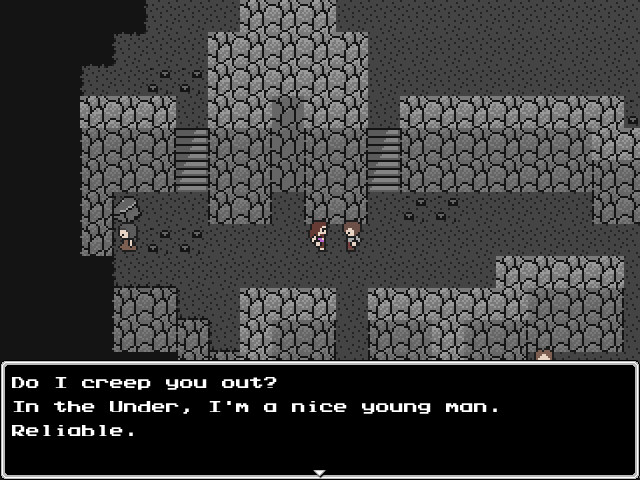
Yes, for all its weighty importance, Three Ghostly Roses really does have plenty of humor. The Grim Reaper-esque Gatekeeper is the most prevalent character aside from Edmund himself and his dialogue rarely fails to be amusing, sometimes bordering on outright quirky. Other NPC’s also provide some darker humor along the way. Edmund’s own martial arts skills also add a stylish action movie flair. This may be a torturous struggle through a nightmarish hellscape, but at least its one where you get to uppercut eagles and shoot energy blasts at corrupted gardeners.
The larger-than-life tone is dropped for the flashbacks in favor of more mundane, relatively natural dialogue. While Edmund’s life was by no means a normal one, the conflicts his daughters face are far more common and relatable and the shift in tone reflects this. This change is particularly effective because of how well it helps to highlight the divide between the living world and the world of the Under.
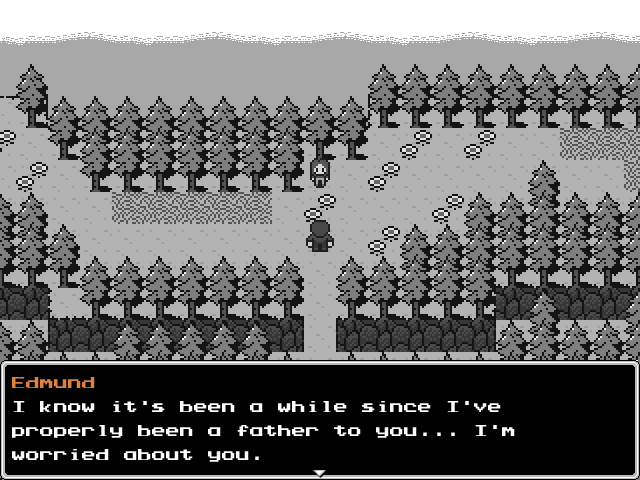
Atmosphere is another major element here. The color palette is very muted and perfectly captures the Under’s constant sense of oppressive gloom. The soundtrack is likewise excellent and ranges from slow and moody to sharp and foreboding to fast and action-packed depending on the scene. NPC’s help to flesh out several of the areas, especially the second major location, and most of them have given in to despair, are chasing something they cannot possibly obtain, or are just barely clinging on to their last shred of sanity.
All the art assets in Three Ghostly Roses are also entirely original; the NES-inspired spritework is simple yet effective and gives the game a distinct and very memorable appearance. Furthermore, Edmund has a unique animation for each of his various martial arts and energy attack skills, which always looks cool and firmly cements that “action movie” vibe during combat sequences. Lastly, every major area is unique and creative, such as a giant tower filled with gardens and hanged statues of the “Robed Ones”, the not-so-friendly inhabitants of the Under who are similar in appearance to the Gatekeeper.
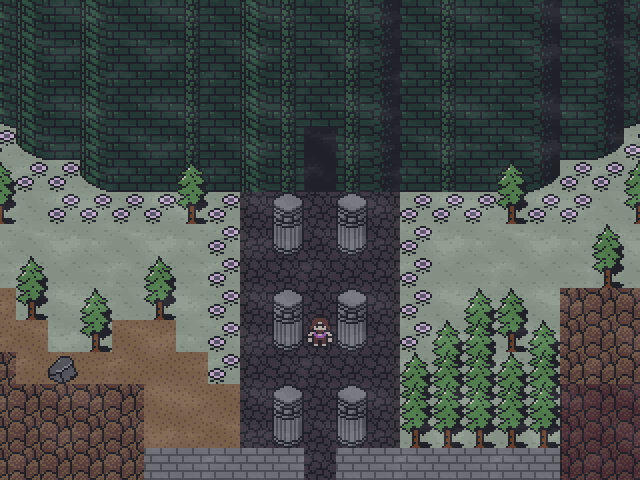
The area design is just as solid from a gameplay perspective as it is from an aesthetic one. Each area is straightforward with a linear main path and several side branches leading to keys (or key fragments) needed for the main path or to various collectibles with more long-term benefits. In other words, don’t expect sprawling dungeons or clever puzzles here because the focus is firmly upon the atmosphere and moving the narrative forward.
The pacing is what makes the level design so solid. Fights along each path are unavoidable and have fixed enemy compositions so you’re never running into the exact same enemy combination in different locations. While some enemies will respawn if you leave an area, shortcuts in the forms of ropes and the like are extremely common, so you never have to refight anything unless you absolutely must retreat and heal before reaching a shortcut. Each area also contains a warp back to the main hub at around the halfway mark, making it painless to rest up at the hub or, likewise, to return to an area later to collect any loose ends. A few minibosses and new skills along the way also serve to shake things up and, while experience points and money exist, you can complete the entire game without any grinding.
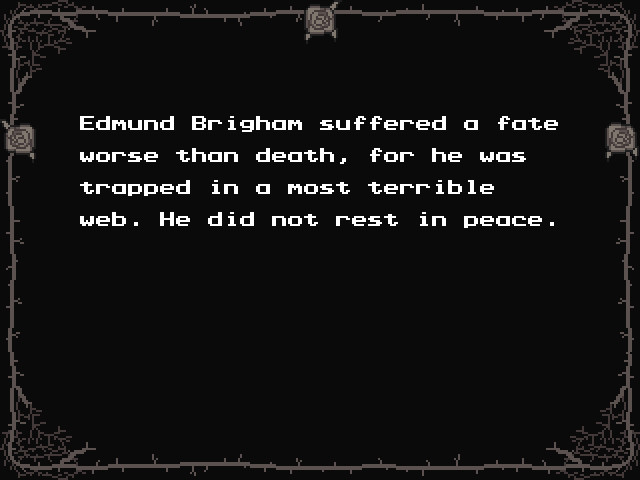
Surprisingly, the combat system is the one area where Three Ghostly Roses falters. While the system itself is reasonably innovative, the game doesn’t push it far enough and it ultimately starts to feel repetitive. There are no items, Edmund is the only party member, and Edmund’s only combat options, aside from attempting to escape, are to use an art, a blast, or a normal attack.
So far this may sound overly simplistic, but this is where the FP system comes in. Edmund uses FP instead of MP for his skills. He starts every battle at 0 FP, he can hold a maximum of 5 FP, the skills themselves cost anywhere from 1 to 3 FP, and each time he performs a normal attack or kills an enemy with a skill he generates 1 FP. All of this makes for an interesting ebb and flow to each battle as you’re always either unleashing a big attack or building up to doing so in a turn or two.
FP isn’t the only unique mechanic at play here either. Edmund regains health every time he kills an enemy, so the fights themselves take on a bit of a puzzle element as the order in which you target enemies largely determines how much health Edmund will have during and after each fight. Instead of being tied to elements, each of Edmund’s arts target the upper, lower, or middle part of an opponent while blasts are neutral attacks for taking out large groups of weak enemies or individual enemies without weaknesses.
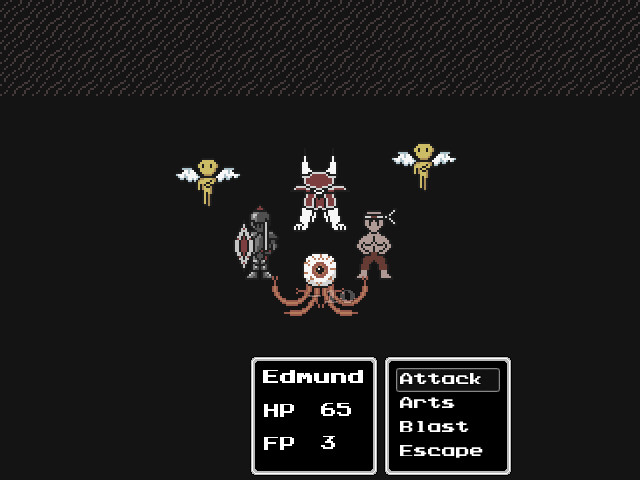
Best of all, as the game goes on Edmund gains the ability to queue up multiple actions in a single round. FP gains and losses are only calculated when the actions go through, which means that Edmund can only use a chain of normal attacks while at 0 FP even though the first one alone would give him the 1 FP he needs for his cheaper skills. However, this also means that you can queue up multiple arts and blasts in a single round as long as you have enough initial FP to meet their individual requirements. For example, if Edmund starts a round at 1 FP and gets 2 actions per round you can queue up a 1 FP Uppercut and a 1 FP Dropkick; the Dropkick will go through as long as the Uppercut kills an enemy and generates an FP in the process.
The targeted weakness mechanic is where the whole combat system falters. Every region inevitably has one enemy type which is weak to upper attacks, one weak to middle attacks, and one weak to lower attacks along with at least one tough enemy you’re meant to take down with the neutral Bolt blast skill and one very weak enemy type that tends to appear in groups.
Enemies with weaknesses die in one hit to their weakness and are immune to the other damage types. This makes the fights start to feel like they rely more upon memorization than actual strategy as the answer is almost inevitably to kill off the weak enemies, then one-shot other enemies with their respective weaknesses, and finally move on to taking out any tougher enemies if they are present. The enemies in each region all deal about the same amount of damage as each other too, so you always want to focus on the enemies which die the fastest first.
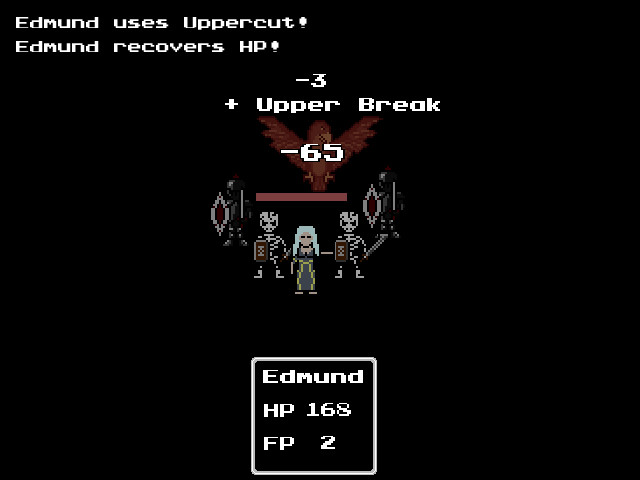
New arts in each area serve as an attempt to change up the combat, but the difference is largely negligible. For example, the second area introduces a set of three targeted skills which “shatter” the defense for that part of the enemy. Though this may sound interesting, each enemy still only has one area which can be “shattered”; shattering doesn’t open the possibility of creating multiple weak points on an enemy and instead means that you go from killing flying enemies with an Uppercut to killing them by using Face Jab to shatter their upper defense and then use an Uppercut.
Stronger, 3 FP cost upgrades of the initial skills also get introduced later, but this likewise means that you’re just going from Face Jab into Uppercut to Face Jab into Roundabout for certain enemies and so on. Edmund’s increased action count per round also ensures that the combat doesn’t evolve much as his ability to generate FP increases at nearly the same rate as his FP costs. There are some good ideas here, but the weakness system ultimately hinders their potential.
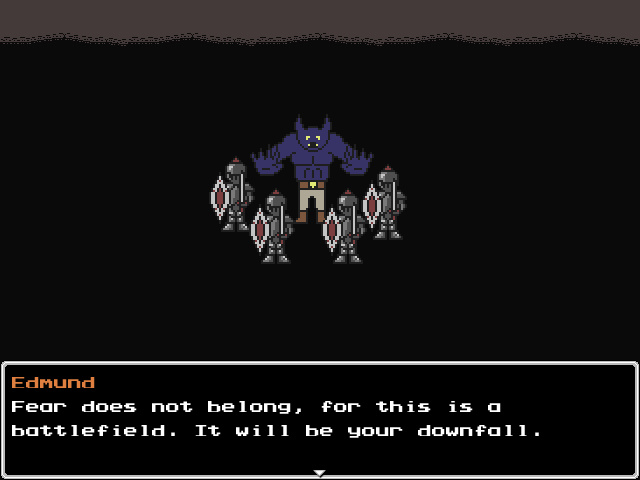
Even with the combat system’s issues, major boss fights are still really cool. Every boss has its own backstory which directly ties in with its region. Boss fights are similar to the duels from the Suikoden series; flavor text every few turns will indicate that the boss has dropped its guard in a location or has focused its guard on two locations and you must hit it where it’s vulnerable. The fights themselves don’t escape the combat system’s flaws, you ultimately go through hitting each of the three areas in some order and then finish off the boss with blast attacks every single time, but they are more engaging than other encounters and most bosses summon minions and/or change their sprite during their respective fights to add even more cinematic style.
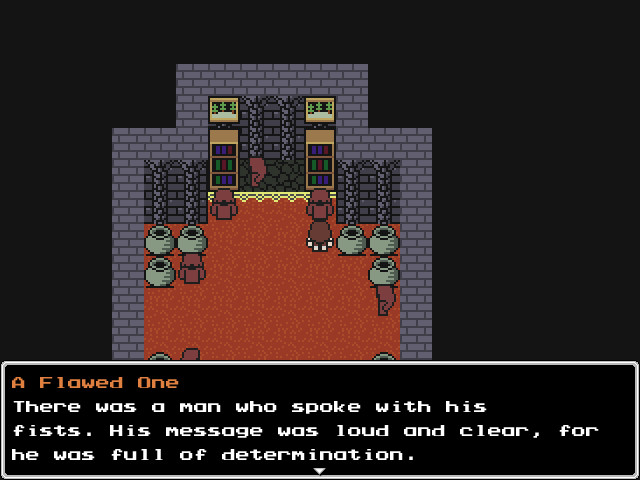
The combat system may be flawed, but Three Ghostly Roses is nevertheless a wonderful game. It tells an engaging, creative story filled equally with action and emotion, it pays plenty of attention to small details, and it has a phenomenal sense of tone and atmosphere. If you like RPG’s at all, Three Ghostly Roses is one game you definitely shouldn’t overlook.